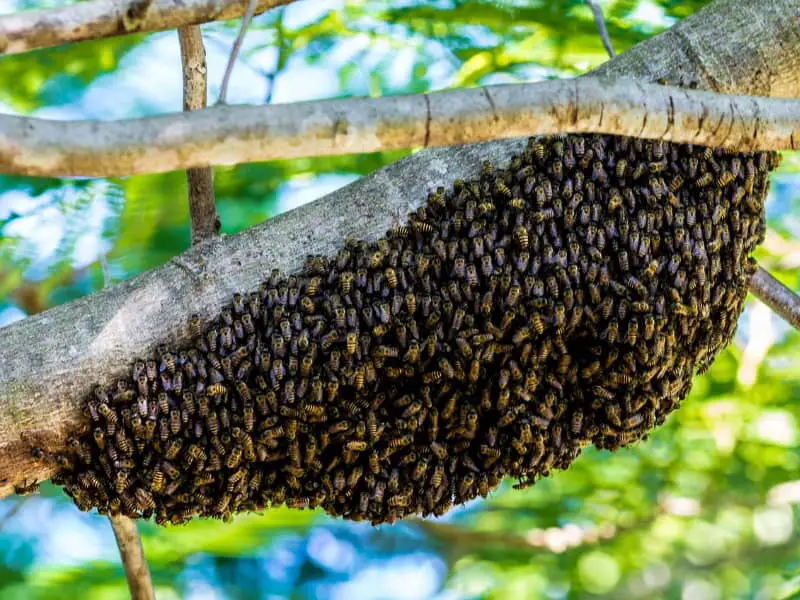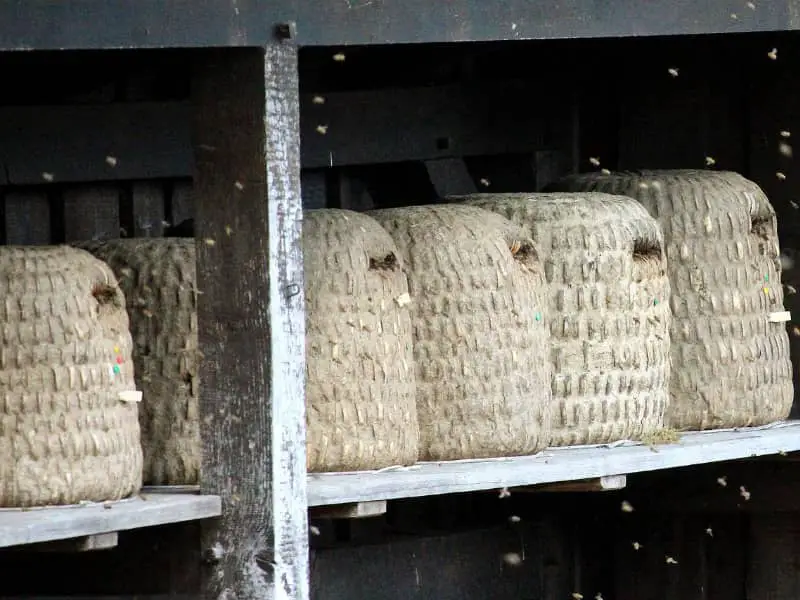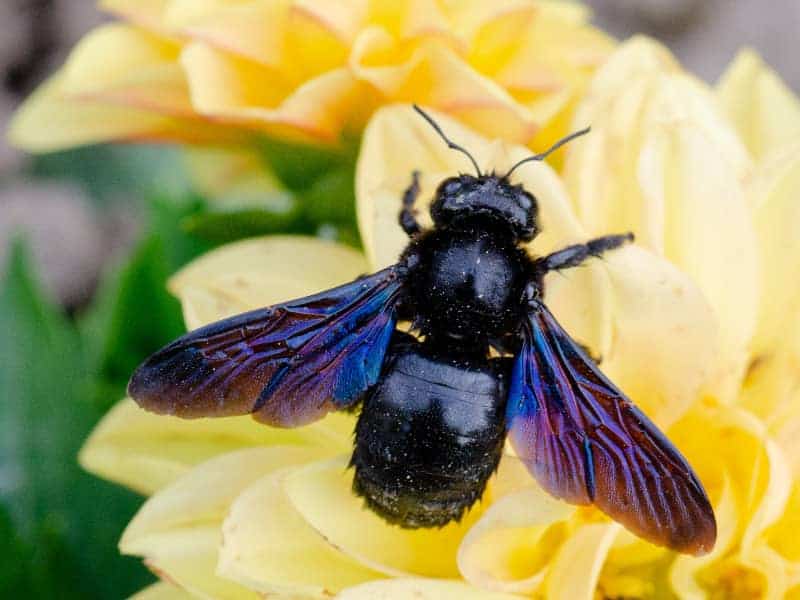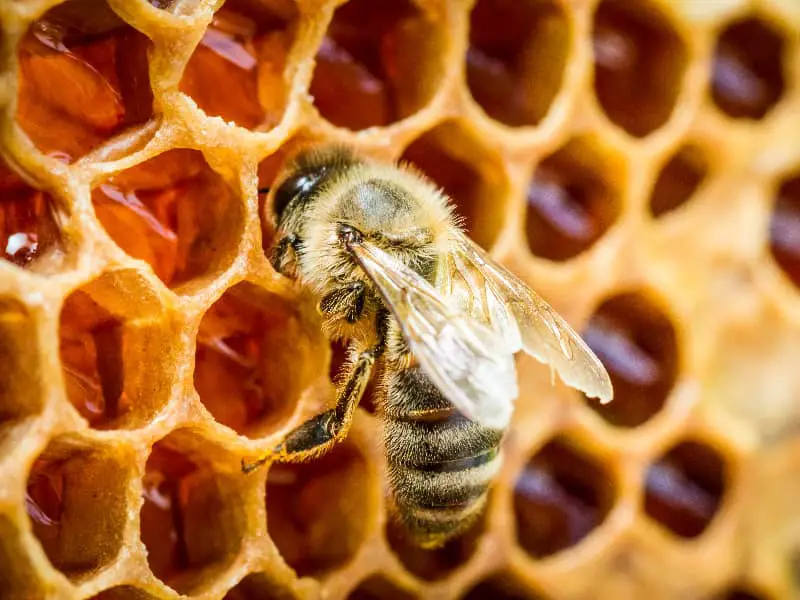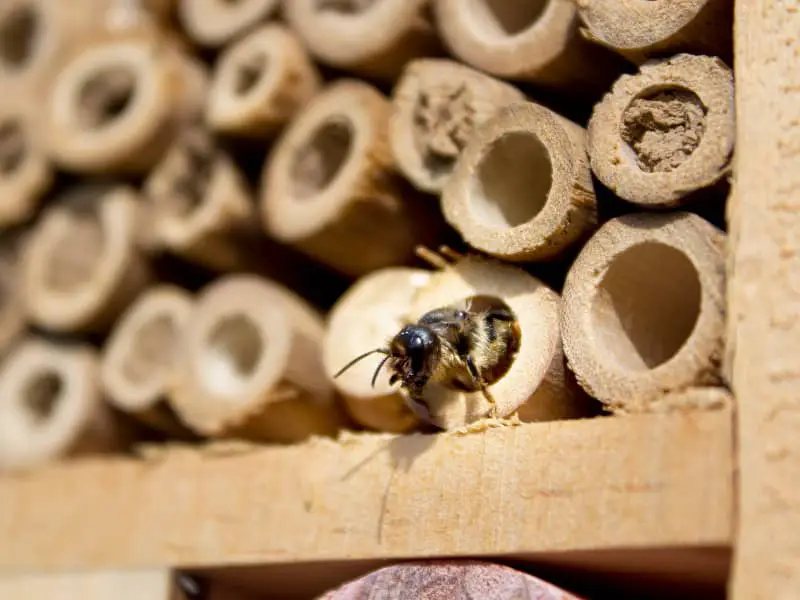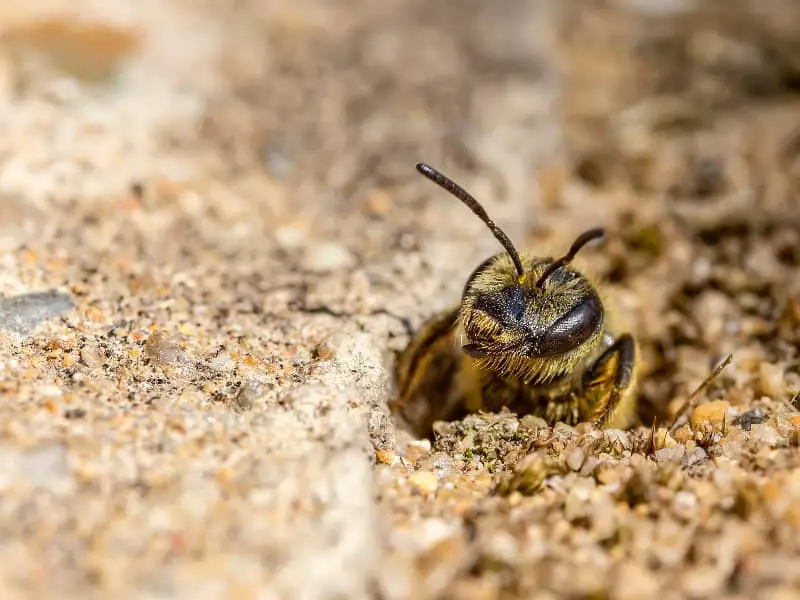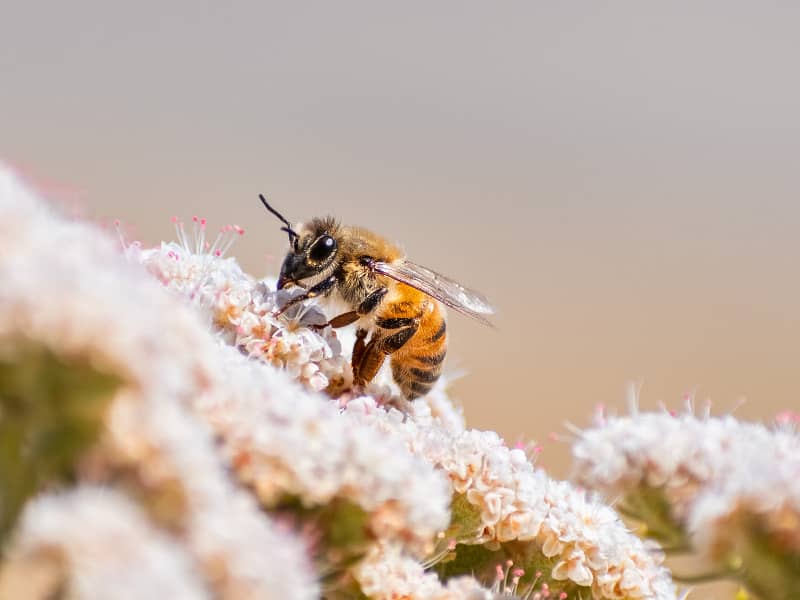
Varroa mite bees
The varroa mite is a topic of great importance for beekeepers and nature lovers alike. This blog post looks at the problem of varroa mite from different perspectives. Whether you are an experienced beekeeper or someone who is simply interested in bees and their health, you will find all the important information here.
- Varroa mite bees
- What is the varroa mite?
- Biology of the varroa mite
- Affected bee species
- Symptoms of infestation of the varroa mite
- Varroa mite distribution
- Health effects on bees
- Health effects on humans
- Preventive measures against the varroa mite
- Treatment methods for varroa mite infestation
- Impact on beekeeping
- Frequently asked questions about varroa mite
- Conclusion: Varroa mite bees
What is the varroa mite?
The varroa mite, scientifically known as Varroa destructor, is a tiny parasite that can infest bees. Originally from Southeast Asia, the mite has spread almost worldwide. It sucks the bodily fluids of bee larvae and adult bees, which can lead to a variety of health problems for bee colonies. The mite's size is comparable to that of a pinhead, but its effects can be devastating.
Why is it a problem for bees?
The varroa mite is not just a minor nuisance, but poses a serious threat to bee colonies. The mite infestation can lead to diseases such as wing deformation virus and other viral infections. In addition, the mite weakens the bees' immune defenses, making colonies more susceptible to other diseases. The consequences of an infestation range from reduced honey production to collapse of the entire colony.
Aim of the blogpost
In this blog post you will get a comprehensive overview of the varroa mite. We will look at its biology, effects on bees and humans, different treatment methods and many other aspects. The goal is to create a deeper understanding of this serious problem and present possible solutions.
Biology of the varroa mite
A deeper understanding of varroa mite biology can help develop effective control strategies. In this section, we highlight the life cycle, food sources and reproduction of these small but dangerous parasites.
Life cycle
The life cycle of the varroa mite is closely linked to that of its host organisms, the bees. Female mites enter the honeycomb cells just before they are sealed and lay their eggs on the larvae. After hatching, the young mites feed on the bee larva until they develop into adults. Then they leave the cell and search for new larvae or infest adult bees. This cycle lasts about 10 to 12 days and is constantly repeated.
Food sources
Varroa mites feed on the hemolymph (body fluid) of bees. They drill small holes in the body of the bee larvae or adult bees to access this fluid. This weakens the bees and often opens the door for secondary infections by viruses and bacteria. The act of sucking is therefore not only an immediate danger due to the deprivation of nutrients, but often has far-reaching health consequences for the entire bee colony.
Reproduction
Varroa mites reproduce in the brood combs of the bees. A female mite lays several eggs in a honeycomb cell, from which both male and female mites hatch. Interestingly, it is often the female mites that survive and continue the cycle, as the male mites die after mating. As a result, a varroa mite population can spread rapidly and severely damage a bee colony in a short period of time.
Affected bee species
Not all bees are the same when it comes to susceptibility to varroa mite. In this section, we discuss which bee species are particularly affected, how the mite affects wild bees, and whether other insects are also at risk.
Honey bees
The honey bee is the best known species of bee and the one most affected by the varroa mite. They are particularly vulnerable to the negative effects of mite infestation, such as diseases and weakened immune systems. In some cases, a heavy infestation can even lead to the collapse of the entire bee colony. This has far-reaching consequences not only for honey production, but also for plant pollination.
Wild bees
Although honey bees are the main focus of attention, wild bees should not be ignored. Some species of wild bees can also be affected by the varroa mite, but the data on this is still relatively thin. Since wild bees play an important role in the pollination of wild plants, their protection is also of great importance.
Other insects
While the varroa mite is primarily a parasite of bees, there is evidence that it can infest other insects as well. However, these cases are rare and often less problematic than in bees. Since the mite specifically requires conditions in honeycombs for reproduction, the risk to other insect species is comparatively low.
Symptoms of infestation of the varroa mite
A varroa mite infestation is not without consequences. In order to assess the extent of the problem and take timely countermeasures, it is important to recognize the symptoms of an infestation. In this section, we look at behavioral changes in bees, physical changes and mortality rates in the colony.
Behavioral changes in bees
A first indication of a varroa mite infestation can be behavioral changes within the bee colony. Bees infested with varroa mites often appear disoriented and show reduced work performance. They may also leave the colony with striking frequency and fail to return, reinforcing the phenomenon of "bee mortality." Reduced brood care and altered collection activities may also be signs of infestation.
Physical changes
In addition to altered behavior, physical signs may also indicate a varroa mite infestation. These include deformed wings, an emaciated appearance and, in advanced stages, even visible mites on the bees' bodies. Such physical symptoms are usually a sign of severe infestation and require urgent action.
Mortality rate
Another indicator of the extent of a varroa mite infestation is the mortality rate in the bee colony. A significant increase in deaths, especially during the breeding season, can be an alarm signal. In addition, an increased number of dead bees outside the hive may indicate a serious problem. However, it is important to rule out other possible causes of increased bee mortality in order to take the right measures.
Varroa mite distribution
The distribution of varroa mite is a crucial aspect in understanding its threat to bees worldwide. Here we look at the geographical distribution, the influence of climate and the seasonal factors that contribute to the spread of the varroa mite.
Geographical distribution
The varroa mite has a wide geographic distribution and can be found in almost all regions of the world where bees are kept. Originally from Southeast Asia, the mite has spread widely through global trade and migratory beekeeping. It is now a serious bee health problem in Europe, North America and many other parts of the world.
Climate factors
Climate plays an important role in the spread and survival of the varroa mite. Warmer and wetter conditions promote the mite's reproduction and spread, while lower temperatures can tend to reduce infestations. Understanding climatic conditions can therefore help to better plan preventive measures and contain infestations.
Seasonal factors
The varroa mite also shows seasonal patterns in its spread. During the bees' brood periods, when many larvae are growing in the combs, there is an increased spread of mites. During periods when there is less brood, the mite population tends to decrease. This seasonal occurrence should be taken into account when planning control measures.
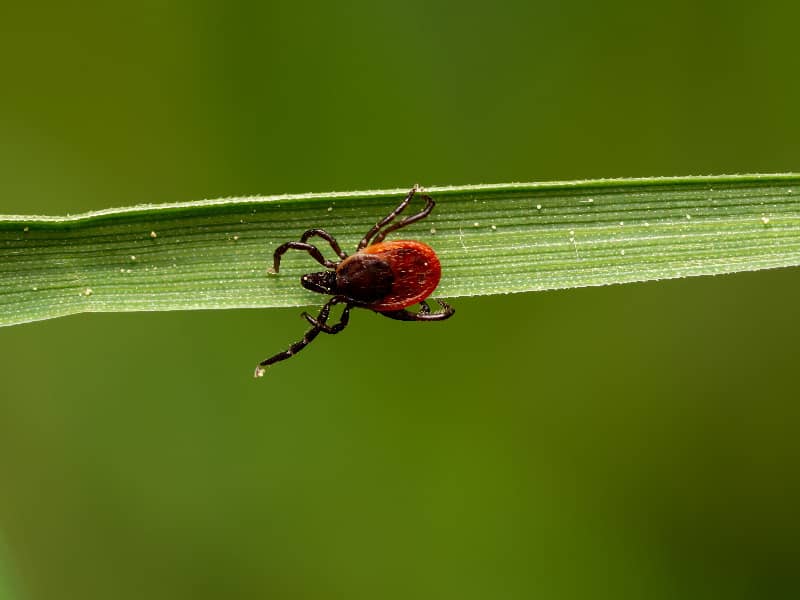
Health effects on bees
Varroa mite infestation is more than just a nuisance for bees; it also has serious health implications. In this section, we highlight which diseases can be transmitted by the mites, how the bees' immune defenses are compromised, and the long-term consequences of mite infestation.
Diseases
One of the most serious problems of varroa mite infestation is the transmission of diseases. The mites are vectors for various viruses and bacteria that can have a negative impact on the health of the bee colony. Particularly well known is the Deformed Wing Virus, which causes deformed wings in bees and severely limits their mobility. This in turn has consequences for pollination and honey production.
Immune defense of bees
Varroa mites not only weaken bees by transmitting diseases, but also compromise their immune defenses. A weakened immune system makes the bees more susceptible to other pathogens and environmental stressors. This can trigger a vicious cycle in which the bee colony becomes more and more susceptible to further problems.
Long-term consequences
The long-term consequences of varroa mite infestation are particularly worrying. Chronic weakening of the immune system and repeated transmission of diseases can lead to a permanent decline in bee health and eventually to the collapse of the entire colony. Moreover, repeated infestations over several years can affect the genetic diversity of the colony, jeopardizing its long-term survival.
Health effects on humans
While the varroa mite is mainly known as a pest for bees, many people also wonder what effects it could have on humans. In this section, we address whether varroa mites are dangerous to humans, how they affect the quality of honey, and whether they can cause allergies.
Do varroa mites endanger humans?
In contrast to the serious effects on bees, varroa mites are generally not directly dangerous to humans. The mites have specialized specifically on bees as hosts and do not pose a direct threat to humans. However, one should not underestimate the indirect impact that a varroa mite infestation can have on bee health and thus on plant pollination.
Honey quality
Varroa mite can affect the quality of honey produced by bees. Due to the stress and diseases caused by the mites in the bee colony, honey production can suffer. Likewise, pathogens transmitted by the mites can theoretically get into the honey, even though the risk of this is considered low.
Allergies
There is no scientific evidence to date that varroa mites can cause allergies in humans. However, since the mites introduce proteins and other bioactive substances into the hive, it is conceivable that people with an existing sensitivity to bee products could be more severely affected by a varroa mite infestation. However, further research is needed to confirm this.
Preventive measures against the varroa mite
The best way to mitigate the harmful effects of varroa mites is prevention. Beekeepers and bee enthusiasts can actively contribute to mite containment through hygienic practices, promoting natural defense mechanisms and selecting resistant bee species.
Hygienic practices
Hygiene is a key word in the fight against the varroa mite. Regular cleaning of hives and beekeeping equipment can minimize the spread of mites. This includes checking the combs and frames regularly and replacing them if necessary. Disinfectants can also be useful, but should be used judiciously to avoid harming the bees.
Natural defense mechanisms
Bees have developed some defense mechanisms against parasites during evolution. Among other things, some bee colonies exhibit behavior in which they actively remove mites from the hive. Beekeepers can encourage such colonies and thus contribute to the natural control of the varroa mite population.
Selection of resistant bee species
There are certain bee species and breeds that show a higher resistance to the Varroa mite. By selectively breeding and choosing these species, beekeepers can reduce the risk of infestation. However, it should be noted that no bee species is completely immune to the varroa mite. A combination of different preventive measures is therefore most effective.
Treatment methods for varroa mite infestation
When a varroa mite infestation is detected, there are several methods to address the problem. These range from chemical and biological to physical treatment options. Each method has its advantages and disadvantages, and often a combination of the different approaches is most effective.
Chemical control
Chemical control of varroa mites is often considered effective, but also controversial. Various acaricides can be used to kill the mites. While this method is fast and effective, there is a risk of residues remaining in the honey or beeswax. In addition, mites can develop resistance to the chemicals used.
Biological control
In contrast to the chemical method, biological control focuses on natural enemies of the varroa mite or on microorganisms that can harm the mites. One example is certain species of predatory mites that eat varroa mites. Some fungi have also been shown to be effective against varroa mites. The advantage of this method is the low risk of residues or development of resistance.
Physical combat
Physical methods include approaches such as temperature control and mechanical removal of mites. Increasing the temperature in the hive, for example, can kill mites without harming the bees. Mechanical removal is usually more time-consuming and requires regular inspections, but can be effective, especially when combined with other methods.
Impact on beekeeping
The varroa mite is not only a problem for the bees themselves, but also for beekeeping as a whole. The effects range from production losses to economic and social consequences. In this section, we highlight the different dimensions in which the varroa mite affects beekeeping.
Production
Varroa mite infestation can have a significant impact on honey production. Due to the stress caused by the mites in the hive, the productivity of the workers is affected. Furthermore, the reproduction of the entire colony can suffer as the queen is also stressed. This can result in smaller colonies that produce less honey and are less effective at pollinating plants.
Economic aspects
The economic impact of a varroa mite infestation can be severe. Beekeepers can suffer significant losses in revenue, and the costs of controlling the mites can be high. This not only has direct consequences for beekeepers themselves, but also affects the prices of honey and other bee products. Likewise, farms that depend on the pollination services of bees may also be affected.
Social aspects
The social impact of varroa mite infestation is manifold. A weakening bee population can divide communities as resources to control mites are limited. In addition, there may be a decline in interest in beekeeping, especially among younger people who may find the challenges daunting.
Ultimately, this has implications for the culture and tradition of beekeeping, which plays an important role in many communities.
Frequently asked questions about varroa mite
Beekeepers and interested parties often have many questions when it comes to the topic of varroa mites. It is important to be well informed in order to take effective measures against the spread of mites. In this section we answer some of the most frequently asked questions.
Can you see varroa mites?
Yes, varroa mites are visible to the naked eye, but they are tiny. They have a reddish-brown coloration and are about 1-1.8 mm in size. However, they are often overlooked because they like to hide in the honeycombs or sit directly on the bees. Regular inspection of the hive is therefore essential.
What can individuals do?
Everyone can make their contribution to combating the varroa mite. For beekeepers, regular checks and any necessary treatments are essential. But also as a consumer you can contribute indirectly by buying honey and other bee products from responsible production. In addition, education in the personal environment and the creation of bee-friendly habitats can be helpful.
Are varroa mites active all year round?
Varroa mite activity is temperature dependent, but they are usually present throughout the year. They are particularly active during the brood phases of the bees, as they use the brood chambers as a hiding place and food source. In winter, when there is no brood, the mites may be less active, but they usually survive in the hive and may become active again in spring.
Conclusion: Varroa mite bees
Varroa mite is a serious threat to bees and bee colonies worldwide. Not only does it have a direct health impact on bees, but it also affects the productivity of apiaries and the economic and social aspects of beekeeping. There are several methods to control this pest, from chemical to biological to physical approaches, but none of them offers a complete solution.
Due to the multiple effects of varroa mite, a comprehensive understanding and constant monitoring is essential. It is important that both beekeepers and the general population are well informed and take appropriate measures to prevent the further spread of mites and protect the health of bees.
In this blog post, we have covered some of the major issues and concerns regarding varroa mite. Although research in this area has advanced, there are still many unknowns, and continued research is critical for the long-term survival of bees and beekeeping.
Author

-
Garden animal - A life with nature
Welcome to my animal blog! My name is Dirk and I am happy to take you on my journey through the fascinating world of animals and gardening.
Born 54 years ago, I have had an insatiable curiosity for the animal world around me since childhood. Although I have moved professionally in other industries, my true passion has always been animals and nature. It is remarkable how a small garden has become such an important part of my life.
Many of my fondest memories are associated with the animals that share our home. Whether it's the curious squirrels that scurry across the trees in the morning, the colorful variety of birds that visit our feeders, or the busy bees and butterflies that pollinate our flowers, every moment with them is invaluable to me.
This blog is my contribution to share my experiences, discoveries and insights with like-minded people. Here I will share stories of unforgettable encounters with animals, give tips on gardening and creating wildlife-friendly habitats, and take you on my journeys through nature.
Thank you so much for being here!
Cordial,
Dirk aka garden animal
Last posts
- 27. February 2024PetsVeganes Hundefutter – Grün und Gesund?
- 18. January 2024ChickensOregano für Hühner
- November 27, 2023HamsterDiurnal hamsters
- November 24, 2023HamsterHamster hammock

